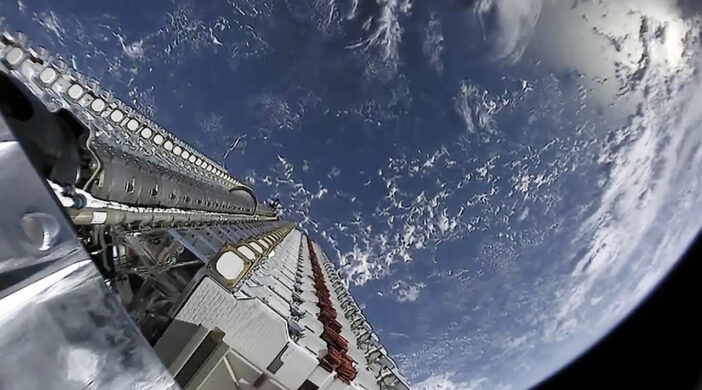WASHINGTON — A race is on to provide direct, global connectivity between satellites and individual cell phones. However, the major players disagreed on how long it could take to fully tap into the market during a panel discussion at the Satellite 2023 Conference on Monday.
Lynk Co-founder and CEO Charles Miller said his company has gotten there first. Lynk has the only direct from satellite-to-cell phone license from the Federal Communications Commission. The technology is being tested in 19 countries and works with every type of smartphone on Earth, he added.
Miller said Lynk has 27 contract worth billions of dollars with mobile network operators worldwide. Lynk plans to begin providing service later this year.
Miller said satellite-to-cell is a $100 billion plus opportunity. The two things needed to scale it up are speed to market and reducing the unit cost of the spacecraft. While a traditional satellite can cost millions of dollars to build, the spacecraft Lynk has launched into orbit thus far have margin costs of less than $200,000 apiece.
Lynk currently has launched three satellites, which the company refers to “cell towers in space”. The company plans to go to 1,000 satellites by 2025 and 5,000 satellites by 2028.
While Lynk has been planning its constellation, SpaceX has launched more than 4,000 Starlink broadband satellites into orbit. (Not all are still functioning). The service recently surpassed one million subscribers worldwide.
Jonathan Hofeller, Starlink vice president for commercial sales, said the company plans to supplement the capacity of terrestrial cell phone towers as well as provide low-latency service to cell phones with its Starlink constellation. SpaceX will begin testing with partner T-Mobile later this year.
Hofeller said SpaceX is now producing six Starlink satellites per day as well as thousands of ground terminals.
Starlink has progressed from Version 1 through Version 1.5 satellites. The company recently launched the first batch of Version 2 minis, which have about four times the capacity of earlier spacecraft.
SpaceX plans to manufacture larger versions of the Version 2 Starlink satellites. Launching them is largely dependent upon the success of SpaceX’s massive Starship/Super Heavy booster, which is being developed at the company’s Starbase facility in south Texas. The two-stage system is being designed to be fully reusable with rapid, airplane like turnarounds between flights.
Founder Elon Musk had previously said he expected the maiden flight of Starship/Super Heavy this month. More recently he said he expected the flight to take place within the next month, indicating a potential slip into April.
While Miller and Hofeller were bullish on satellite-to-cell service, Iridium CEO Matt Desch was more cautious. The key metrics will be the user experience, what the service will cost and what people are willing to pay for it. He said it could take up to 15 years to fully roll out satellite-to-cellular service.
Desch said one of the reasons he got out of the cellular industry was that it had become rather static. Companies were unwilling to make major investments, and innovation was happening at the edges in applications.
Desch said Iridium will be rolling out emergency messaging for areas without cellular coverage. The company wants to connect satellites to cars and everything else on Earth.

